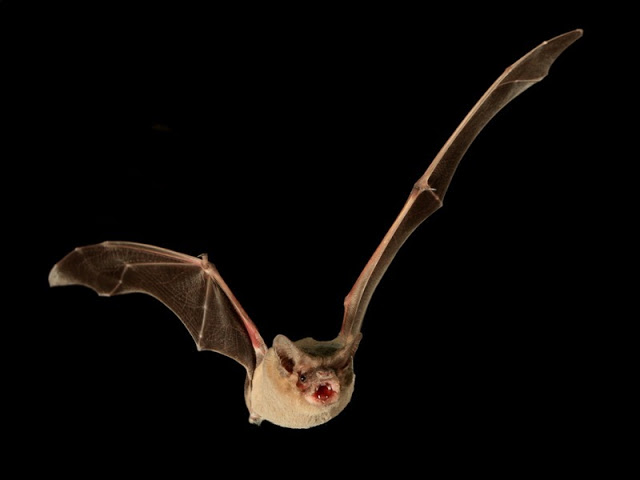

| Online: | |
| Visits: | |
| Stories: |

| Story Views | |
| Now: | |
| Last Hour: | |
| Last 24 Hours: | |
| Total: | |
Fastest Flyer in Animal Kingdom Has Record Breaking Speed
Catch me if you can: the Brazilian free-tailed bat can reach record-breaking speeds.
Credit: © MPI for Ornithology
Birds are still a model for aviation engineers today and remain unequaled when it comes to flight characteristics. While birds can take off at comparatively low speeds, even the most modern aircraft must reach a speed of around 300 kilometers per hour to be able to lift off.
The main contributing factors here are the animals’ aerodynamic, projectile-like body shape and their low weight due to special bones. Moreover, the narrow wings found in faster-flying species also enable greater lift relative to the aerodynamic force invested.
Swifts, like the common swift (Apus apus), which can reach speeds of 110 kilometers per hour, are considered the fastest birds in the world at horizontal flight. Peregrine falcons can even reach speeds of up to 300 kilometers per hour when diving. In contrast, due to their wing structure, bats generate greater resistance, and are generally considered slower flyers.

Credit: pau.artigas/Flickr
Animals with long and narrow wings usually fly faster than those with shorter and wider ones. For this reason, the scientists selected the Brazilian free-flying bat (Tadarida brasiliensis) for their study. Even the experts themselves were surprised by their results: “Initially, we could hardly believe our data, but they were correct: at times, the female bats, which weigh between 11 and 12 grams, flew at speeds of over 160 kilometers per hour (99.4 MPH) — a new record for horizontal flight,” says Kamran Safi from the Max Planck Institute for Ornithology.

Credit: Mike Baird - Flickr
The data on the bats’ flying speeds were collected using a radio transmitter weighing just half a gram and attached to the their backs using an adhesive and fell off after two to five days. Its regular beeping signal was localized using a mobile receiver installed on a small aircraft.
“It was not easy for the pilot to follow the fast-flying animals so that we could localize them accurately and measure their flight path continuously,” explains Dina Dechmann. The scientists also evaluated the data recorded by the closest weather station and noted the wind conditions at the time of the studied flights. “External factors like landscape and tailwinds cannot explain these results, as they had no impact on the maximum speeds,” says Dechmann.
Gary McCracken, Kamran Safi, Thomas Kunz, Dina Dechmann, Sharon Swartz, Martin Wikelski,
Airplane tracking documents the fastest flight speeds recorded for bats
Royal Society Open Science 3: 160398. doi:10.1098/rsos.160398
Source:



